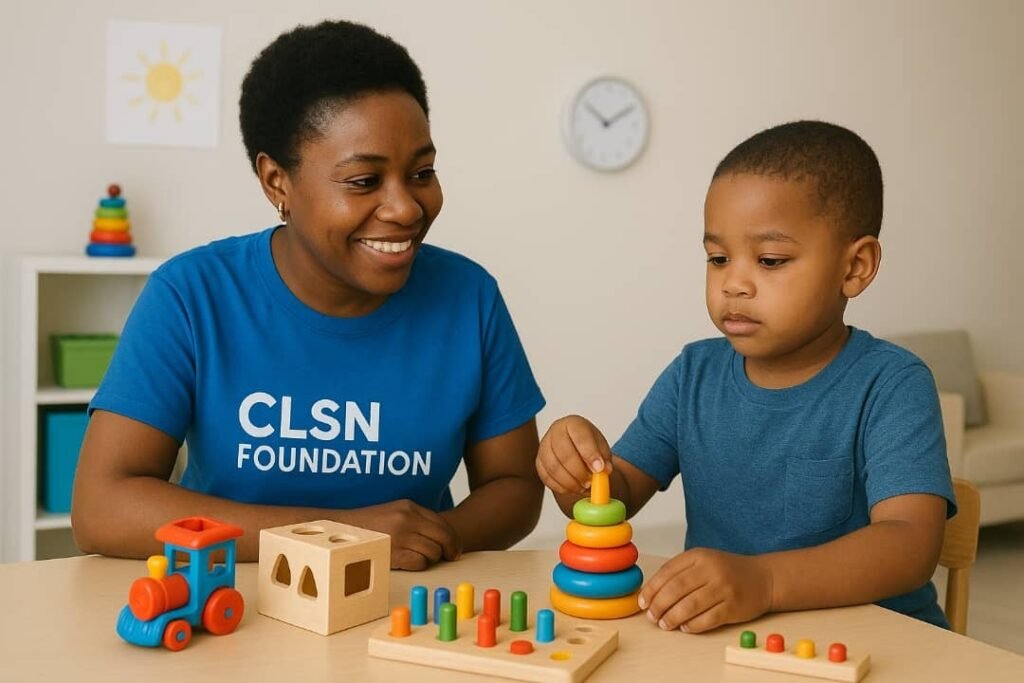September 25, 2025

Sensory seeking refers to behaviors where individuals actively pursue intense sensory experiences to meet their nervous system’s need for stimulation. Unlike sensory avoidance, where people withdraw from sensory input, sensory seekers crave and actively pursue sensory experiences that others might find overwhelming or unnecessary. This neurological difference affects how individuals process and respond to sensory information from their environment.
These behaviors are commonly observed in individuals with autism spectrum disorders, attention deficit hyperactivity disorder (ADHD), sensory processing disorder (SPD), and other neurodevelopmental conditions. However, sensory seeking can also occur in neurotypical individuals and may manifest differently across various contexts and environments.
The underlying theory of sensory seeking is rooted in Ayres’ Sensory Integration Theory, which suggests that the nervous system receives, processes, and responds to sensory information to produce adaptive behaviors. When this system is not functioning optimally, individuals may seek out additional sensory input to achieve the optimal level of arousal needed for attention, learning, and behavioral regulation.
In line with this, Dunn’s Model of Sensory Processing further explains sensory seeking through the concept of neurological thresholds. Individuals with high neurological thresholds require more intense or frequent sensory input to register sensations and achieve optimal functioning. These individuals often engage in active sensory-seeking behaviors to meet their sensory needs.

Proprioceptive Seeking: Individuals may engage in heavy work activities such as jumping, crashing into furniture, carrying heavy objects, or seeking deep pressure through tight hugs or weighted items. As a result, they often appear to have boundless energy and may seem unaware of their own strength.
In contrast, Vestibular Seeking involves spinning, swinging, jumping on trampolines, or engaging in activities that provide movement and motion. Similarly, these individuals are drawn to playground equipment, and consequently, they may struggle to sit still for extended periods.
Tactile Seeking: Behaviors include touching various textures, fidgeting with objects, seeking messy play activities, or frequently touching people and objects in their environment.
Visual Seeking: This may involve staring at lights, watching spinning objects, creating visual patterns, or seeking bright and colorful stimuli.
Auditory Seeking: Individuals might make vocal sounds, seek loud environments, or repeatedly listen to the same sounds or music at high volumes.
Gustatory and Olfactory Seeking: This includes seeking strong flavors, frequently smelling objects or people, or showing preferences for intense tastes and smells. Let’s have a day full of God’s wisdom, ease and peace at work with us
A case study that highlights how thoughtful interventions can transform the learning experience of a child living with autism.
Marcus, an energetic 8 year old student with autism, was enrolled in a mainstream classroom. His teacher noticed that Marcus often struggled with sensory seeking behaviors. He frequently fell out of his chair, and as a result, he crashed into walls during transitions.
Marcus found it hard to focus on seated activities. He chewed on pencils and shirt collars throughout the day and often sought comfort by stroking the classroom pets.
Assessment Findings
The evaluation revealed that Marcus had:
• High proprioceptive and tactile seeking needs.
• Low registration for vestibular input.
• Difficulty with self regulation, especially during less structured activities.
Intervention Strategies
To support Marcus, his teacher and therapist implemented a sensory friendly plan:
• Scheduled movement breaks every 30 minutes.
• A weighted lap pad during seated activities.
• A chewy necklace to meet oral sensory needs.
• “Heavy work” activities such as carrying books or erasing the board.
•A dedicated sensory break area with a mini trampoline and therapy ball.
Outcomes
• Within just six weeks, the results were remarkable:
• Marcus showed improved focus during lessons.
• Disruptive behaviors reduced significantly.
• He participated more confidently in group work.
• His academic performance improved, as his sensory needs were met proactively

Key Takeaway
Every child deserves the chance to thrive in the classroom. By understanding and addressing sensory needs, teachers can unlock potential that might otherwise remain hidden.
As professionals, educators, and caregivers, let us continue to approach each child with patience, creativity, and the belief that with the right support, every child can succeed.
#AutismAwareness #InclusiveEducation #SpecialNeedsSupport #ChildDevelopment #OccupationalTherapy #EducationForAll #Neurodiversity #TeachingStrategies